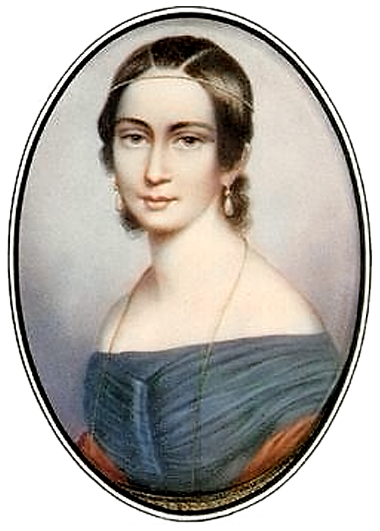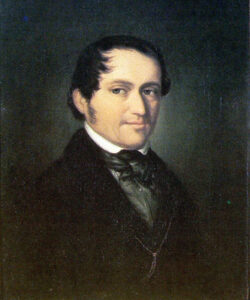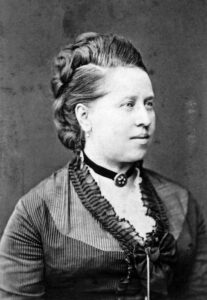
Clara Wieck Schumann
Perhaps the most renown pianist of her time, Clara Wieck married the composer Robert Schumann and thereafter subjugated her musical career to that of her husband. In doing so, she followed the conventions of her time, whereupon a married woman would not be appearing on stage. She too was a fine composer, but compositions by women at that time received little attention outside of domestic circles.
After Robert’s untimely death, Clara lived another 40 years, returning to the concert stage and teaching to support her family. She would exert significant influence on the history of late 19th-century music through her own career and through her close connections with composer Johannes Brahms and violionist Joseph Joachim.

Personal Data
Dates: 1819-1896
Born: Leipzig
Residences: Leipzig, Dresden, Düsseldorf, Frankfurt
Clara Schumann Timeline
Early Years
Clara began studying piano with her father at age 5. At age 9 she performed her first public recital at the Leipzig Gewandhaus. After this debut, she toured Europe and her phenomenal talent was recognized by Goethe, Mendelssohn, Chopin, and, of course, the young Robert Schumann who fell in love with her.

Clara’s father, Friedrich Wieck (1785-1873), determined early to train her for a career as a pianist. He proved a very effective piano teacher, but less admirable as a father and husband due to his domineering nature.
Clara’s mother, Mariane Tromlitz Wieck (1797-1872), came from a musical family. Like Clara, she was initially trained by her father, a church musician and composer. She later studied with Friedrich Wieck and married him in 1816 at the age of 19. That marriage ended in 1824 when Mariane left him. Under the laws of the time, the father in a divorce would presumptively have custody of children, and so Clara grew up in her father’s care from the age of 5. Mariane continued her career in music as a singer and piano teacher.

In 1828, Wieck married again to Clementine Fechner. Clara’s half sister Marie was born to this second marriage. Marie also received early training in music from her father and had a career as a pianist and singer.
Soirées musicales, Op. 6
This set of six character pieces written in 1835 or 1836 while Clara was still a teenager shows the influences of Mendelssohn and Chopin and reflects how strongly Clara knew, and worked with, the current tastes and compositional trends of her era. Clara by that time had a reputation throughout Europe and her playing had been praised by Mendelssohn, Chopin, and Paganini as well as by literary luminaries like Goethe.
Piano Concerto, Op. 7
Written also in 1835 or 1836, this concerto shows Clara’s compositional skill in large-scale works and fine orchestration. The concerto conforms in many ways to the typical virtuoso concerto of the time. You could compare it to Chopin’s Piano Concerto No. 1 in its themes, figurations, and use of the orchestra. And while it bears certain marks of a youthful work, it also presents some strikingly creative passages.
The work was originally scored for orchestra with woodwinds, brass, and timpani. It is performed here in an arrangement for strings alone. Note that the rumbling in the string basses at the end of the second movement is a substitute for a timpani roll.
(You must be logged into the Circle of Scholars to view the rest of this page.)
